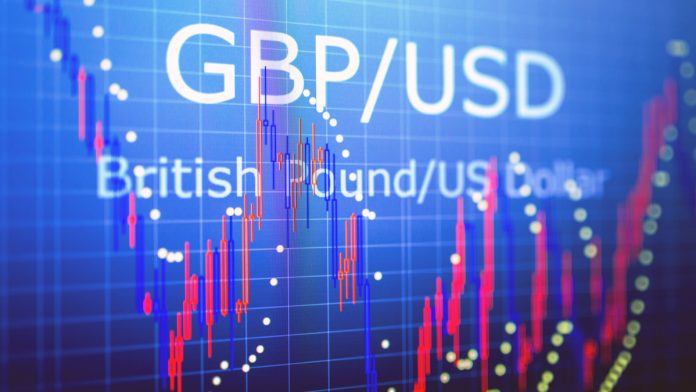Strong UK data helped the pound claw back losses versus the US dollar in the previous week. The pound US dollar exchange rate rallied almost 1% from US$1.2048 to close on Friday at US$1.2150. The pound was extending those gains in early trade on Monday.
| What do these figures mean? |
| When measuring the value of a pair of currencies, one set equals 1 unit and the other shows the current equivalent. As the market moves, the amount will vary from minute to minute.
For example, it could be written: 1 GBP = 1.28934 USD Here, £1 is equivalent to approximately $1.29. This specifically measures the pound’s worth against the dollar. If the US dollar amount increases in this pairing, it’s positive for the pound. Or, if you were looking at it the other way around: 1 USD = 0.77786 GBP In this example, $1 is equivalent to approximately £0.78. This measures the US dollar’s worth versus the British pound. If the sterling number gets larger, it’s good news for the dollar. |
A series of strong data across the previous week boosted the pound. Data showed that wages grew at the fastest pace in 11 years, inflation crept over the Bank of England’s 2% target and retail sales beat economists’ expectations, indicating that UK consumers are still happy to spend despite the upcoming Brexit deadline of 31st October. The encouraging data could mean that the BoE policymakers are discussing whether the current monetary policy is appropriate or whether they should be adopting a more hawkish stance by rising interest rates.
| Why do raised interest rates boost a currency’s value? |
| Interest rates are key to understanding exchange rate movements. Those who have large sums of money to invest want the highest return on their investments. Higher interest rate environments tend to offer higher yields. So, if the interest rate or at least the interest rate expectation of a country is relatively higher compared to another, then it attracts more foreign capital investment. Large corporations and investors need local currency to invest. More local currency used then boosts the demand of that currency, pushing the value higher. |
There is no high impacting UK data to be released this week. This leaves the pound vulnerable to Brexit news flow and rumours. This is particularly the case given that Brexit is the principal driver of movement in the pound.
MP’s continue to attempt to find a way to block a new deal Brexit. Suggestions have been floated of a cross party alliance under a caretaker national unity party should Boris Johnson lose the vote of no confidence political analysts are expecting to be called in early September.
The pound could come under pressure following leaked government papers highlight which paint a bleak picture of the UK following a disorderly Brexit. Trade disruption, food and medicine shortages as well as civil unrest could be experienced for days, weeks or months following a no deal Brexit.
| Why is a “soft” Brexit better for sterling than a “hard” Brexit? |
| A soft Brexit implies anything less than UK’s complete withdrawal from the EU. For example, it could mean the UK retains some form of membership to the European Union single market in exchange for some free movement of people, i.e. immigration. This is considered more positive than a “hard” Brexit, which is a full severance from the EU. The reason “soft” is considered more pound-friendly is because the economic impact would be lower. If there is less negative impact on the economy, foreign investors will continue to invest in the UK. As investment requires local currency, this increased demand for the pound then boosts its value. |
Will Fed Chair Powell Reset Interest Rate Expectations On Friday?
The mood for the dollar was weak at the start of the previous week as investors grew increasingly concerned over the health of the US amid the ongoing US -Sino trade war. As the week progressed the dollar managed to claw back some losses thanks to data showing that US inflation remained strong and that US consumers were still spending, unfazed by the ongoing trade dispute.
This week the focus will be on an appearance by Federal Reserve Chairman Jerome Powell on Friday. With investors believing that the Federal Reserve will cut interest rates again in September, any comments by the Fed Chair will be closely scrutinised.
——
Currencylive.com is a site operated by TransferWise Inc. (“We”, “Us”), a Delaware Corporation. The content on our site is provided for general information only. It is not intended to amount to advice on which you should rely. You must obtain professional or specialist advice before taking, or retain from, any action on the basis of the content on our site. Although we make reasonable efforts to update the information on our site, we make no representations, warranties or guarantees, whether express or implied, that the content on our site is accurate, complete or up to date. Some of the content posted on this site has been commissioned by Us, but is the work of independent contractors. These contractors are not employees, workers, agents or partners of TransferWise and they do not hold themselves out as one. The information and content posted by these independent contractors have not been verified or approved by Us. The views expressed by these independent contractors on currencylive.com do not represent our views.





